- Templars of the Rex Deus Families
- Treasures from the Holy Land to Scotland
- Rosslyn Chapel and the Four Large Cases
The Origin of the Knights Templar – Descendants of Jewish Elders?
31 DECEMBER, 2015 - 14:09 MARK PINKHAM
__
The Knights Templar initially arrived in the Holy Land on a mission to reclaim some treasure that they believed was rightfully theirs. According to the modern Templar historians, Tim Wallace-Murphy and Christopher Knight, the knights who banded together as the Knights Templar were part of a wave of European royalty descended from Jewish Elders that had fled the Holy Land around 70 AD, when it was invaded by the Romans.
Templars of the Rex Deus Families
Before leaving their homeland, these Elders had hidden their temple treasures and priceless Essene and Kabbalistic scrolls in strategic regions of the Holy Land so that the Roman invader Titus could not plunder them as the spoils of war. The Jewish Elders then immigrated to Europe. There, many of them married into the continent's noble families. Of these Elders, twenty-four would become the patriarchs of a group of European families known by the sobriquet of the “Rex Deus” or “Star” families.
For hundreds of years the secret locations of the Jewish treasure filtered down through the families of the Elders - until the First Crusade, when knighted members of the Rex Deus joined the procession of holy warriors traveling east with the dual goal of defeating the Moslems and recovering their family treasure.
The original nine Knights Templar were either born into or related to the Rex Deus families, as was Godfrey de Boullion, the French general who led them against the Saracens during the First Crusade. His cousin, King Baldwin II of Jerusalem, assisted the Templars in retrieving the treasure by donating the al-Aqsa Mosque for their use.
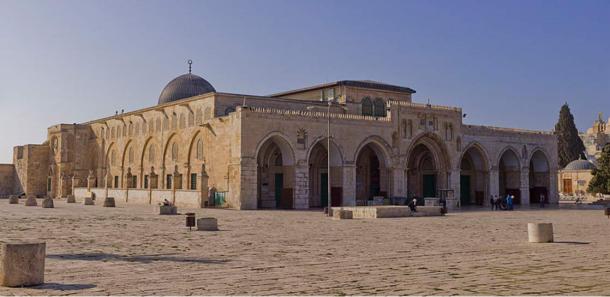
Northeast exposure of Al-Aqsa Mosque on the Temple Mount, in the Old City of Jerusalem, Israel. ( CC BY SA 3.0 )
Treasures from the Holy Land to Scotland
Traces of the Templars’ ensuing excavations were later discovered in the 1800s by a detachment from the Royal Engineers of Great Britain and are now in the possession of the family of the late Knight Templar archivist of Scotland, Robert Brydon.
- Greed and Decline: The Treasure of the Knights Templar and Their Downfall
- Mystery of the Knights Templars: Protectors or Treasure Hunters on a Secret Mission?
- The Masonic Initiation Wells of the Quinta da Regaleira
Apparently the Jewish Elders had stashed much of their treasure under Solomon’s Stables, because it was there that the Templars spent most of their time excavating. After nine years of digging, the original nine Knights had accumulated enough treasure and documents to fill four large trunks.
When their patron, King Baldwin II, suddenly took ill and died, the Knights took their four cases into Europe, stopping briefly at St. Omer in Flanders to have one of the documents copied and then replaced by cleric Lambert de St. Omer.
Called the Heavenly Jerusalem, the copied document is now stored in the library of the University of Ghent in Belgium.
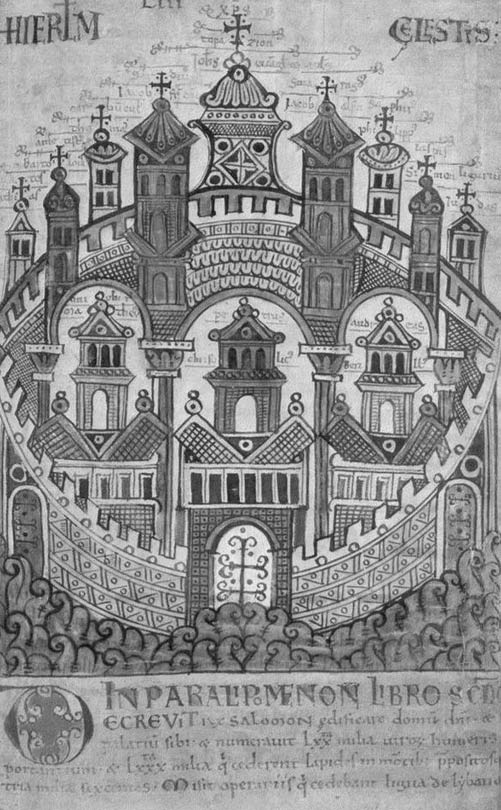
Copy of the ‘Heavenly Jerusalem.’ ( University of Ghent)
After a special ceremony with Pope Honorius III at the Council of Troyes in 1128 (making their organization official in the eyes of the Church) two of the Knights, Hughes de Payen and Andre de Montbard, carried their four cases of treasures to Kilwinning, Scotland, the location of the “Mother” Grand Lodge of Freemasonry.
Rosslyn Chapel and the Four Large Cases
The trunks resided there for many years before eventually being moved to Sinclair Castle in Roslin, near Edinburgh. The Sinclairs were one of the Rex Deus or Star families whose destiny had, according to one legend, become forever entwined with the Knights Templar when their ancestress Catherine de Saint Clair married Hughes de Payen a decade or so before he took the vows of a monk in 1128. It is because of the Sinclair-Templar bond that much of the Knights’ treasure, including the prodigious wealth that landed in Scotland after the Templar escape from France in 1307, ended up in the coffers of the Sinclair Clan.
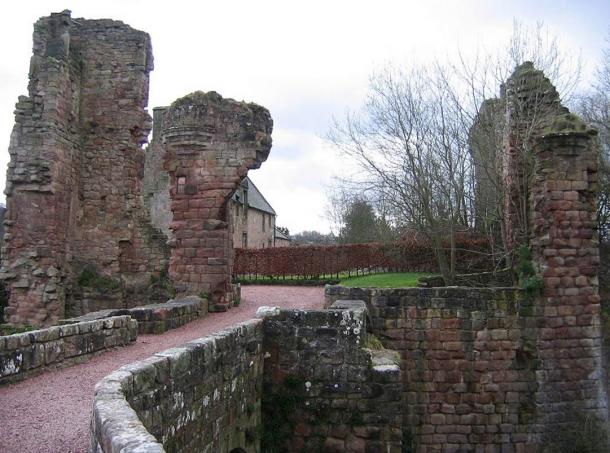
Ruins of Sinclair (Roslin) Castle, Roslin, Scotland. ( CC BY SA 3.0 )
The Sinclair Earls of Roslin kept the four cases of Templar treasure safe in their castle until a fire unexpectedly broke out and they were forced to remove them from the collapsing edifice. The calamitous event apparently had a silver lining, however, because legend has it that soon after the fire, construction on nearby Rosslyn Chapel began in earnest. Thus, the safekeeping of the four boxes may have been the original purpose for the construction of Rosslyn Chapel.
- The Grail Cypher: A radical reassessment of Arthurian history
- The City of Caesars
- The Intriguing Carvings of Rosslyn Chapel
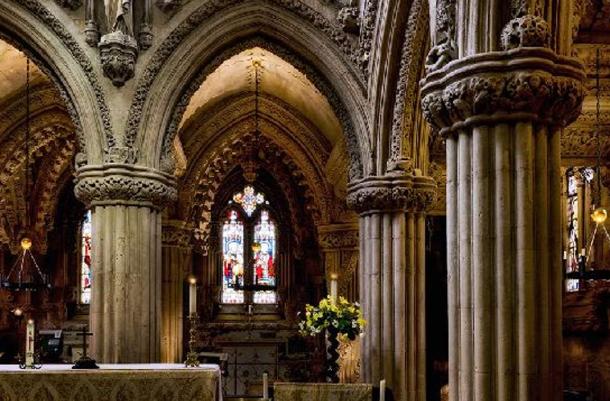
Inside the Rosslyn Chapel, Roslin, Scotland. (Mark Amaru Pinkham )
Recent confirmation for the survival of the four cases in Rosslyn has come through ground scans in the chapel taken over the past twenty years, which reveal a vault in the crypt containing four large boxes. This vault is located directly under the keystone and within the most energetically protected part of the chapel.
If Rosslyn Chapel was built as a copy of Solomon’s Templar or Herod’s later temple, as many believe, then this region of the chapel would correspond to the inner sanctum or Holy of Holies.
Researcher Christopher Knight contends that Rosslyn Chapel is a model of Herod’s Temple, which is why it contains a so-called “unfinished” outer wall.
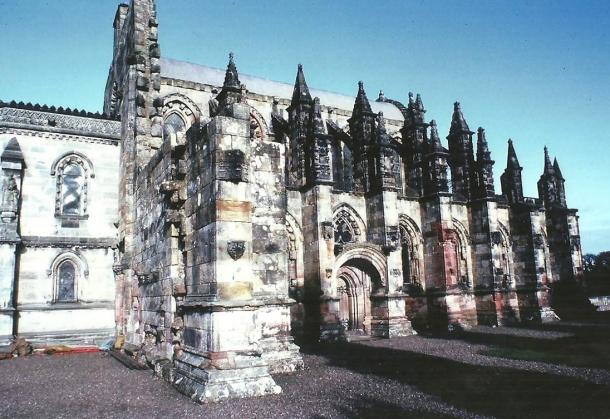
The outside of Rosslyn Chapel, Roslin, Scotland. (Mark Amaru Pinkham )
Knight asserts that this wall was added intentionally to give the Chapel the appearance of the ruins of Herod’s Temple - as it looked when the Templars excavated under it. If this is true, then Rosslyn Chapel was built to duplicate Herod’s Temple so that the Knights’ Jewish treasure could be symbolically returned to a version of its original hiding place in the Holy Land.
Featured Image: Knight Templar – Temple Church, London, England ( CC BY NC ND 2.0 ) and Knights Templar Seal ( Public Domain )
Excerpted from World Gnosis: The Coming Gnostic Civilization by Mark Amaru Pinkham. 2010. Adventures Unlimited Press, Kempton, IL.
_
eof
-
_
eof
-


Ei kommentteja:
Lähetä kommentti
You are welcome to show your opinion here!